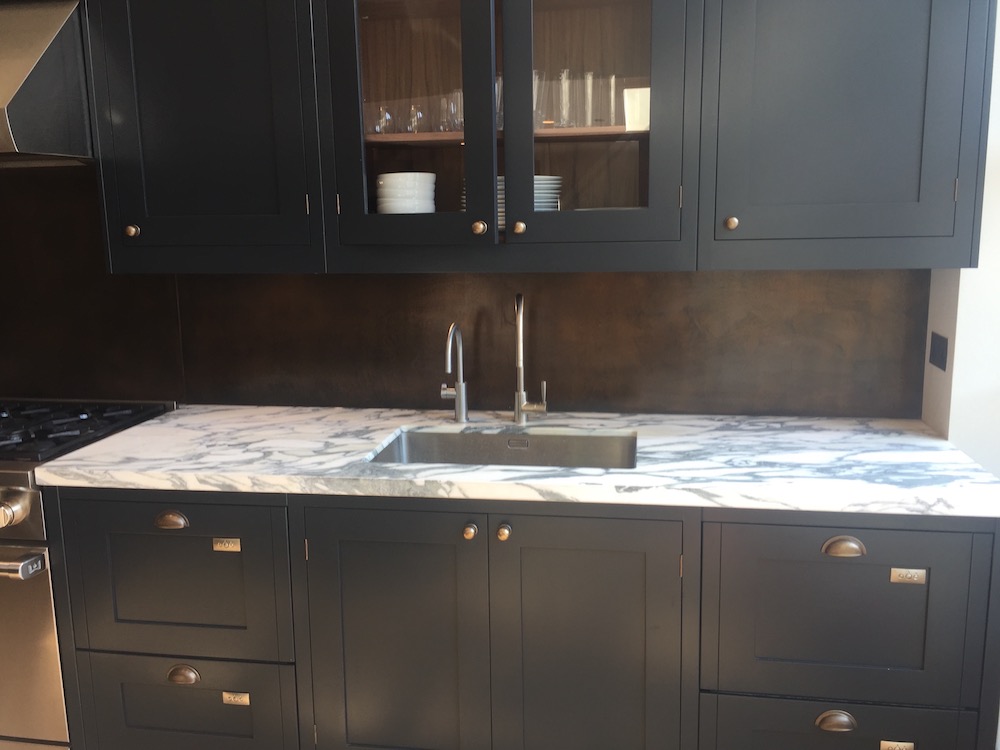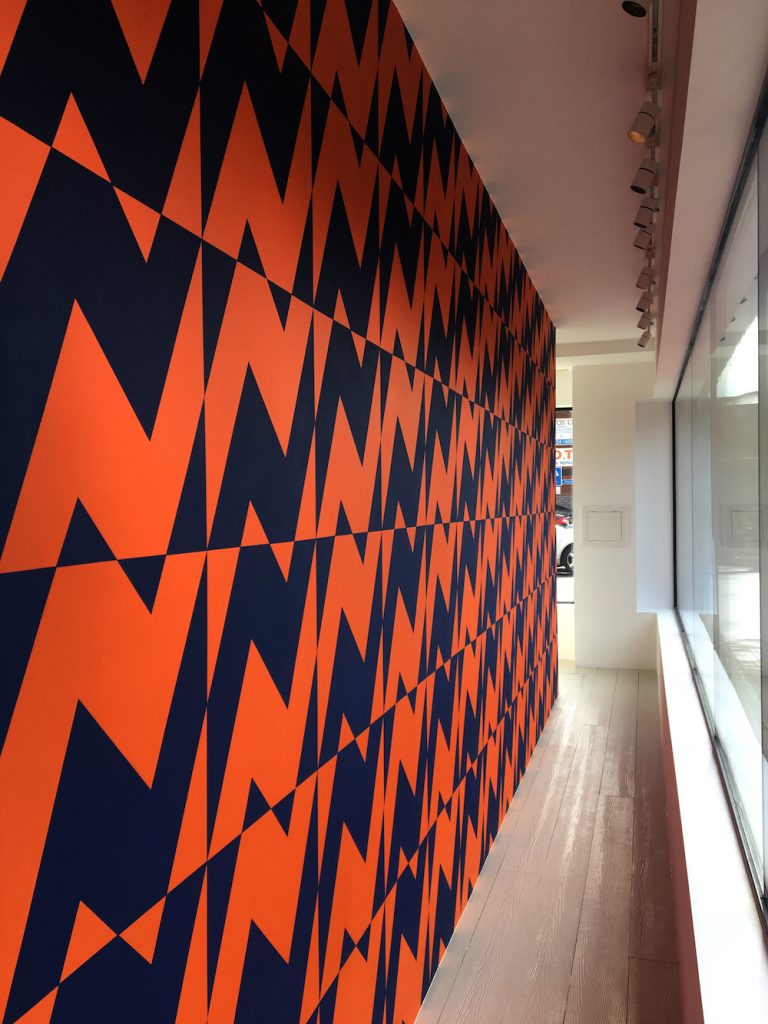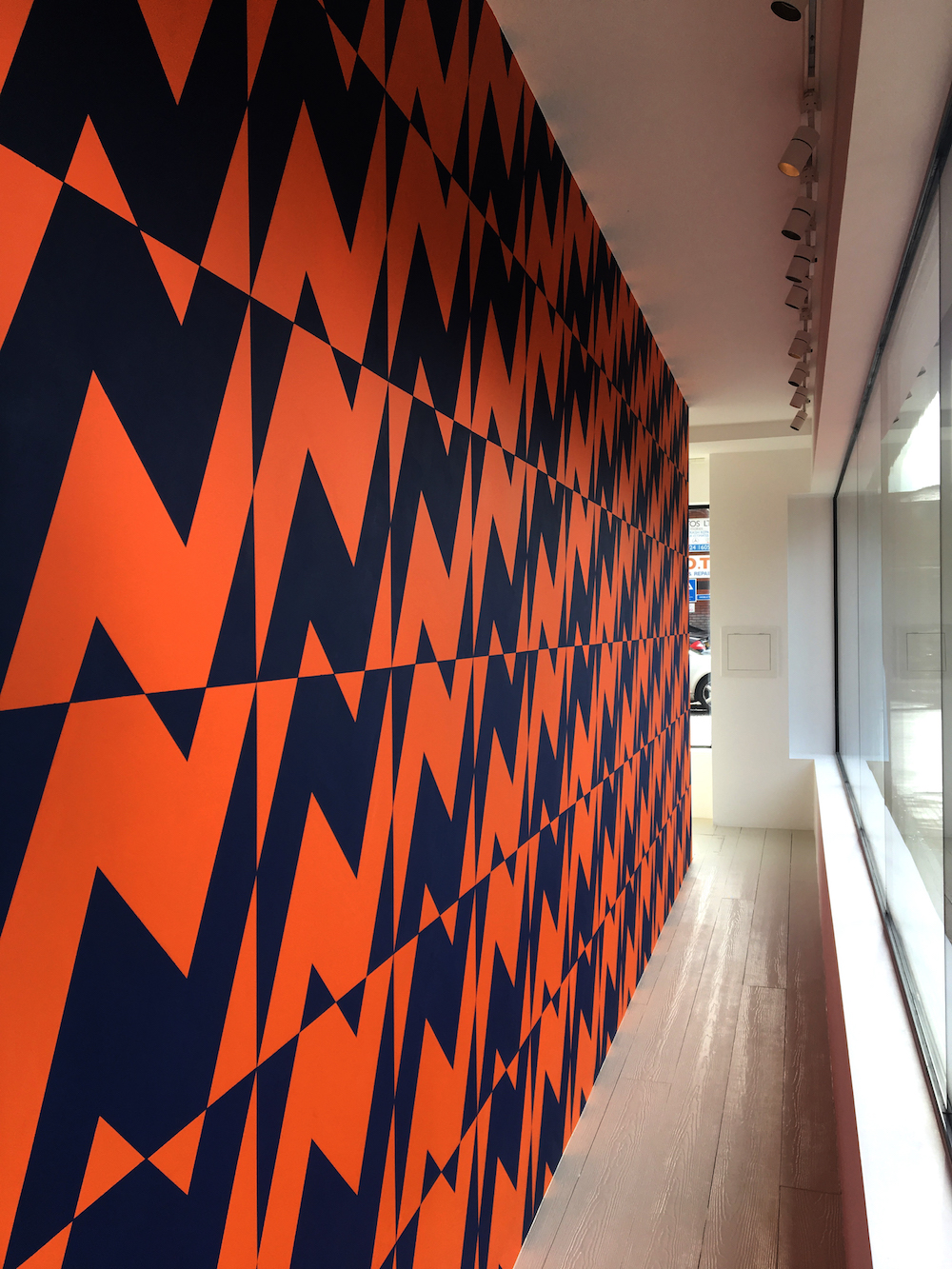
Two Tones-Art Exhibitions reviewed by Nico Kos
TWO TONES
Two very different shows in London, CASCADE by Dominic Beattie and ASHES by Guy Haddon-Grant, explore form through the binary restriction of palette. Nico Kos
The artist Dominic Beattie is much loved for his process of serendipitous pattern making. Before CASCADE, his first solo show at JGM Gallery, he made expansive, geometric large scale works, using a process of bricolage with found or discarded odd bits and ends. Joyfully popping with colour, they emphasised the moment when a schematic emerges – like a beat – which is then given free rein to repeat or scat exponentially. There was a continued presence of the artist’s hand, and what defined his process was a form of improvisation. Beattie was open to accidents which would queue a pattern shift, like a key change. “Freedom to invent and respond to that invention characterised his earlier work,” says artist Martin Maloney in his intimate catalogue essay for the show.
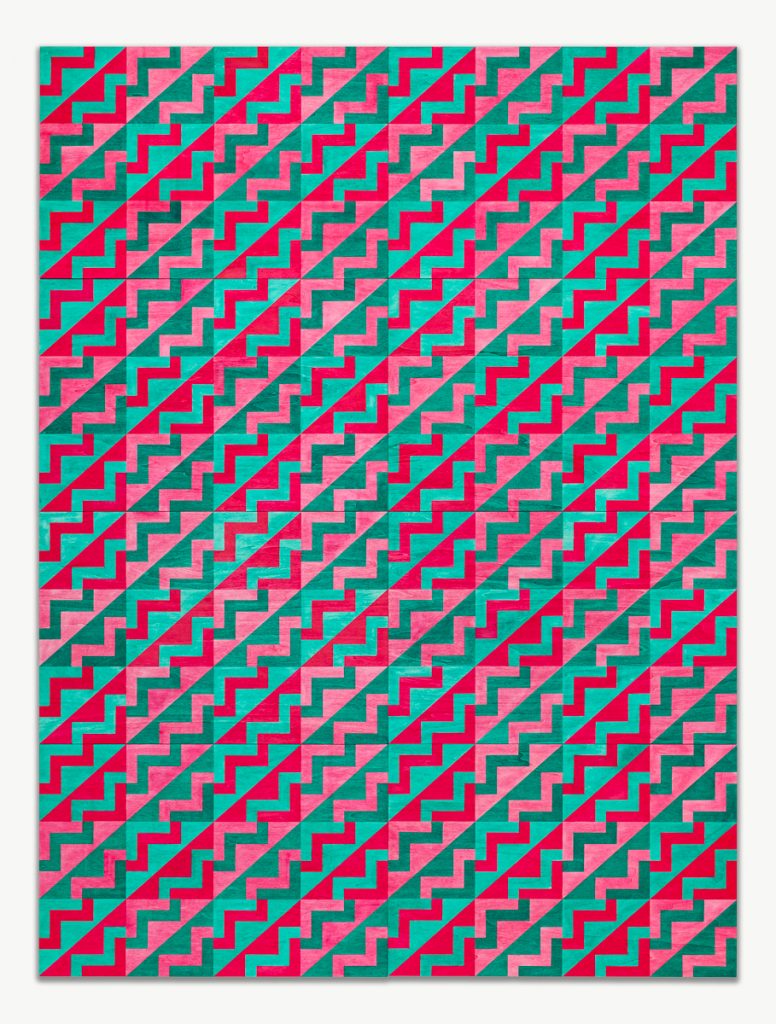
In this new body of work, Beattie has gone wildly minimal – if you can imagine such a thing. He has swapped his signature, obviously hand made bricolage style, for the rigour of hard edged painting. Moreover he has used a restricted palette of only two colours per painting. It is like seeing into the mind of a fanatic. Individually these paintings – though none were made with an actual brush – are verging on the psychedelic. Jagged forms, like Bowie’s 70s lightening, are repeated and reversed in ultramarine/burnt sienna, crimson/cyan, turquoise/p-grey, blue/yellow.

They have the flamboyance of Delauney with the discipline of Riley, and call to mind works by the founder of the Memphis Collective, Nathalie du Pasquier – a prolific producer of decorative surface, textiles carpets, plastic laminates and furniture.
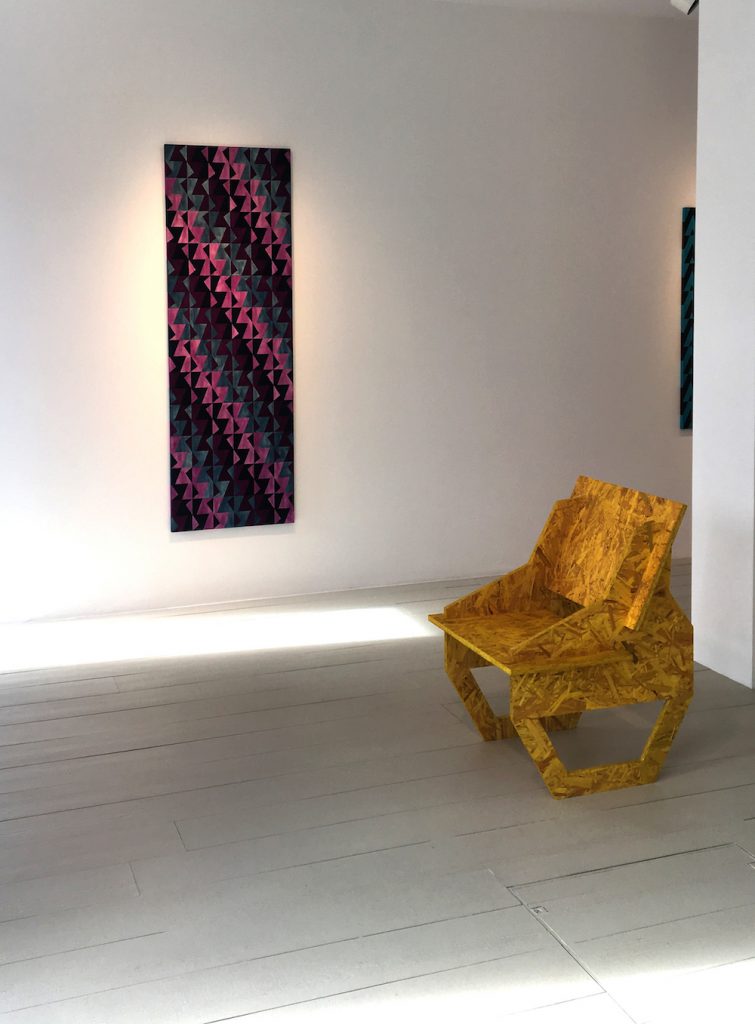
“I think that artists always have a core area of interest they orbit. As we circle it, we are at times, attracted and later repelled. Everything I make is a variation of the same theme. Colour, line, rhythm and hand made. These works are probably the closest to the core I have been,” says Dominic Beattie in his artists statement.
True to form, Beattie has succeeded in giving each unlikely pairing of colours, a playful, upbeat rhythm. They are pitch perfect. By challenging himself to push through the accidental, he skips into pure form creation. This is further amplified by the groupings of hand dyed pdf flatpack chairs and tables, created by partner Lucia Buceta, placed strategically throughout the space. Whilst inviting you to take a seat so you can fully appreciate the optical power of these works, you may be more inclined to dance.
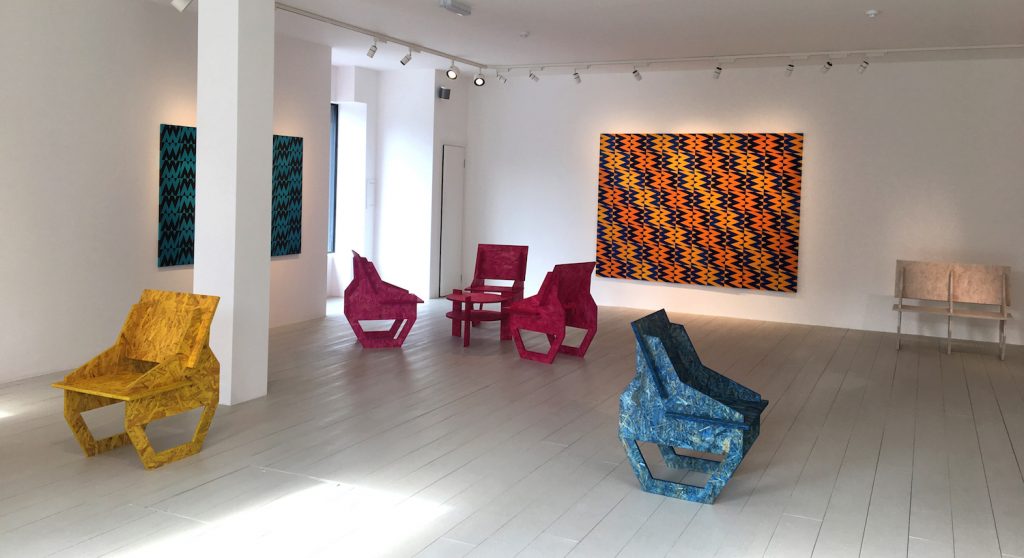
“When Dominic first sent us his show plan, I couldn’t see how they would all fit together without overwhelming the senses,”says gallery manager and fellow artist Alice Wilson, “but we have hung it exactly as he intended and it works perfectly! I even love the hot pink chairs.”
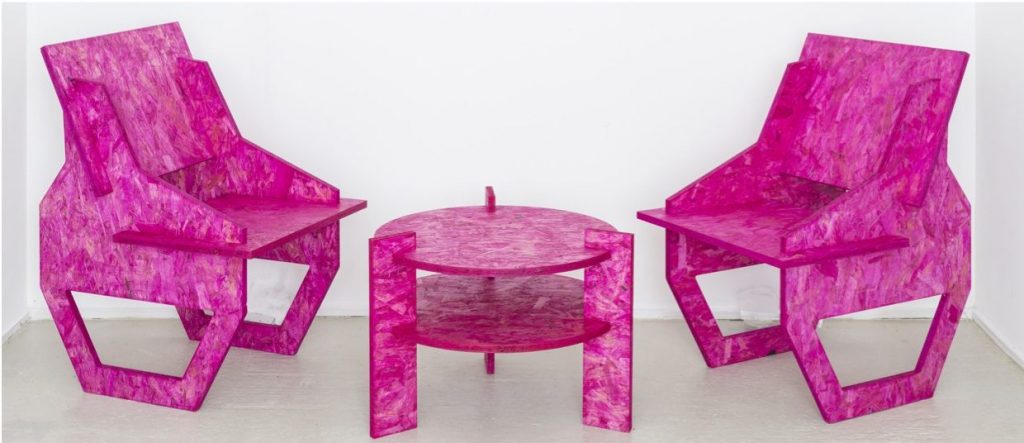
They draw you right in. If you stare at them long enough, all you see is one shape, infinitely, in all the colours. “We are thrilled to launch Dominic’s new work in this exhibition CASCADE,” says gallery founder Jennifer Guerrini Maraldi, “as it is fittingly a celebration for JGM Gallery’s first anniversary.”
Almost essential has organised for you to come and Meet Dominic Beattie over Brunch from 11 to 1pm on Thursday the 22nd March 2018. Email me here to get your invitation and RSVP.
* * *
Across the river a very different artist Guy Haddon-Grant — predominantly known for his three dimensional work – has also conceived of an entire show in a restricted palette. But in this case, there is a total absence of colour, you might even say chroma-phobia, only pure black and bright white. Meticulously laid out across two floors (Haddon-Grant also submitted a gallery plan and installed the works) in a bijou gallery space on Piccadilly Arcade, ASHES is the sixth pop up by forward thinking duo xox.
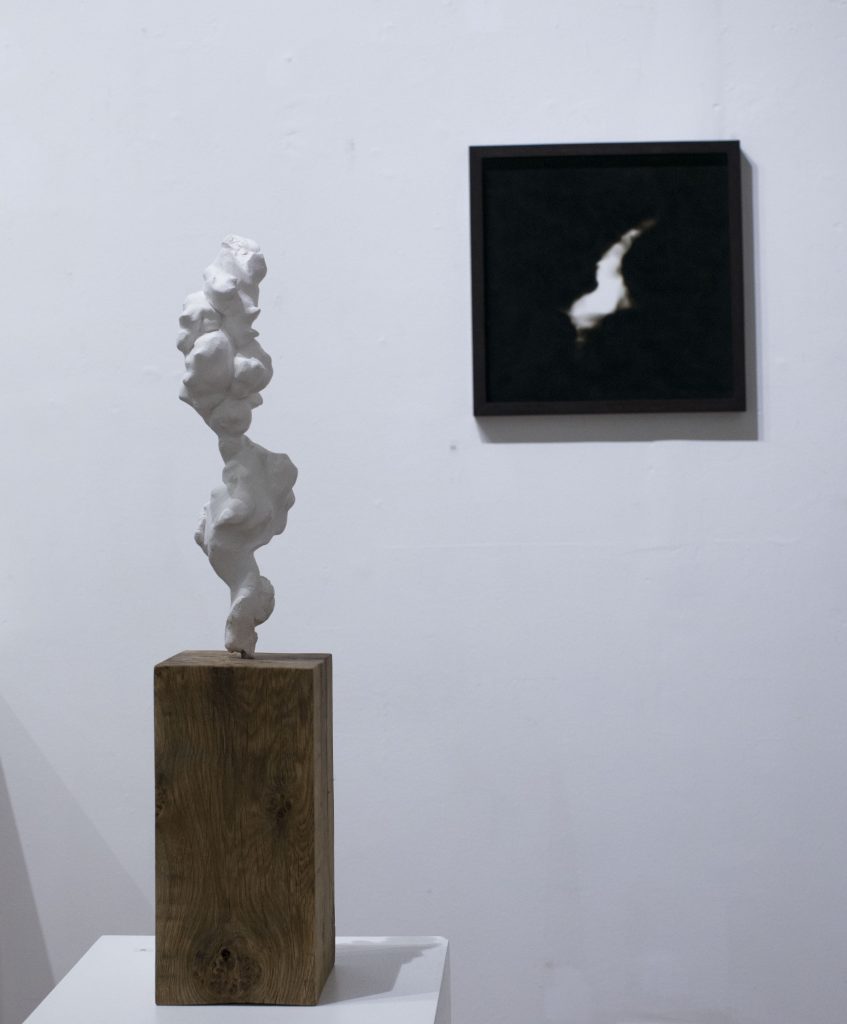
“The black of the soot or the charcoal can pack a real punch, they have such breadth of quality, that there is no need for other colours. By using the brightest of white bases, I have a greater range of tone to play with,” explains Haddon-Grant
In CASCADE, Beattie’s repetition of form produces a sense of the infinite: forms expand into the moment. With ASHES, the exclusive use of two tones emphasises the balance between gesture and form creation: how rigour can enhance form, or save things from going past their tipping point. Wall mounted works made from the soot of a candle and charcoal frame a series of black and white cumulous-like clay based sculptures on wooden plinths. We experience the rough and the smooth, the yin-yang, of light being entirely absorbed or entirely reflected by the same form.
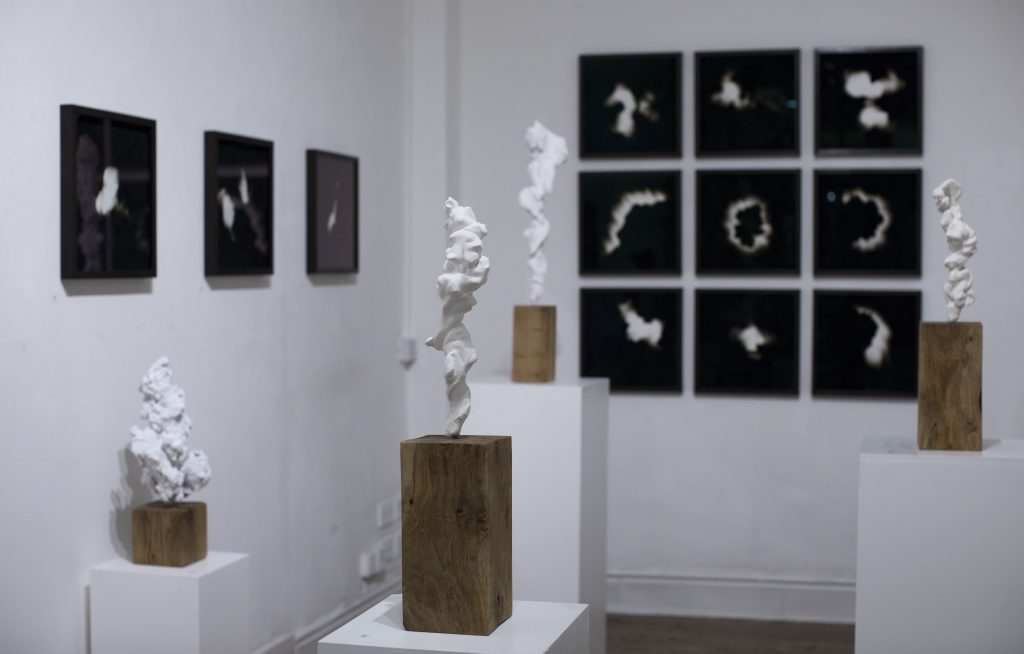
“I like the presence that black can give a sculpture, weighty and dense, its form is only revealed as you get closer,” says Haddon-Grant. “By contrast the white I use for the sculptures gives them oppositional qualities of lightness and softness. They are playful.”
Like Beattie, but for very different reasons, Haddon-Grant uses the volume of the gallery to play three dimensional forms against two dimensional wall mounted gestures. Movement captured in soot and charcoal is echoed by forms suspended in space. You can still see the imprint of fingertips pushing, building upwards in these sculptures. These abstract biomorphic forms seem to defy gravity, in the same way that soot paintings on paper defy logic. ASHES is a brilliantly executed exercise in the balance of two tones.
Jessica McBride
Julian Phillimore at Dellasposa Gallery

